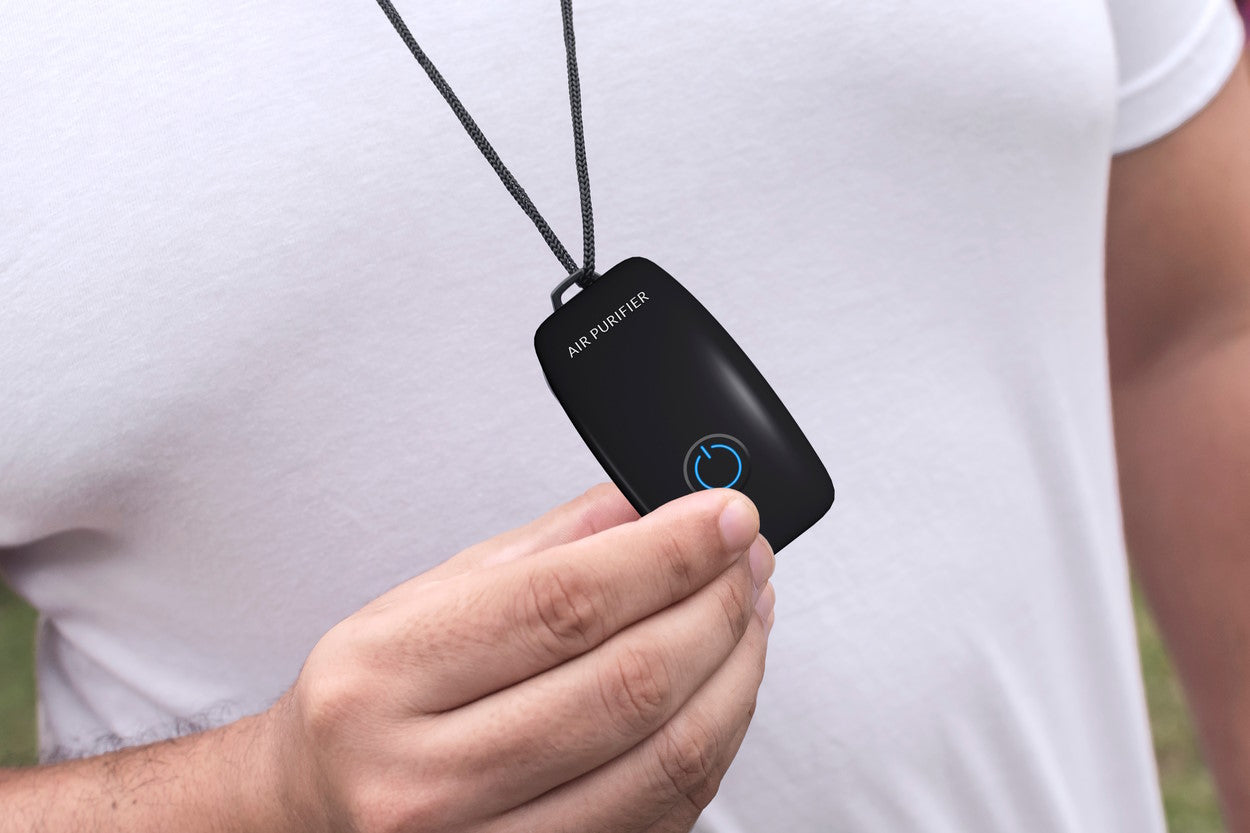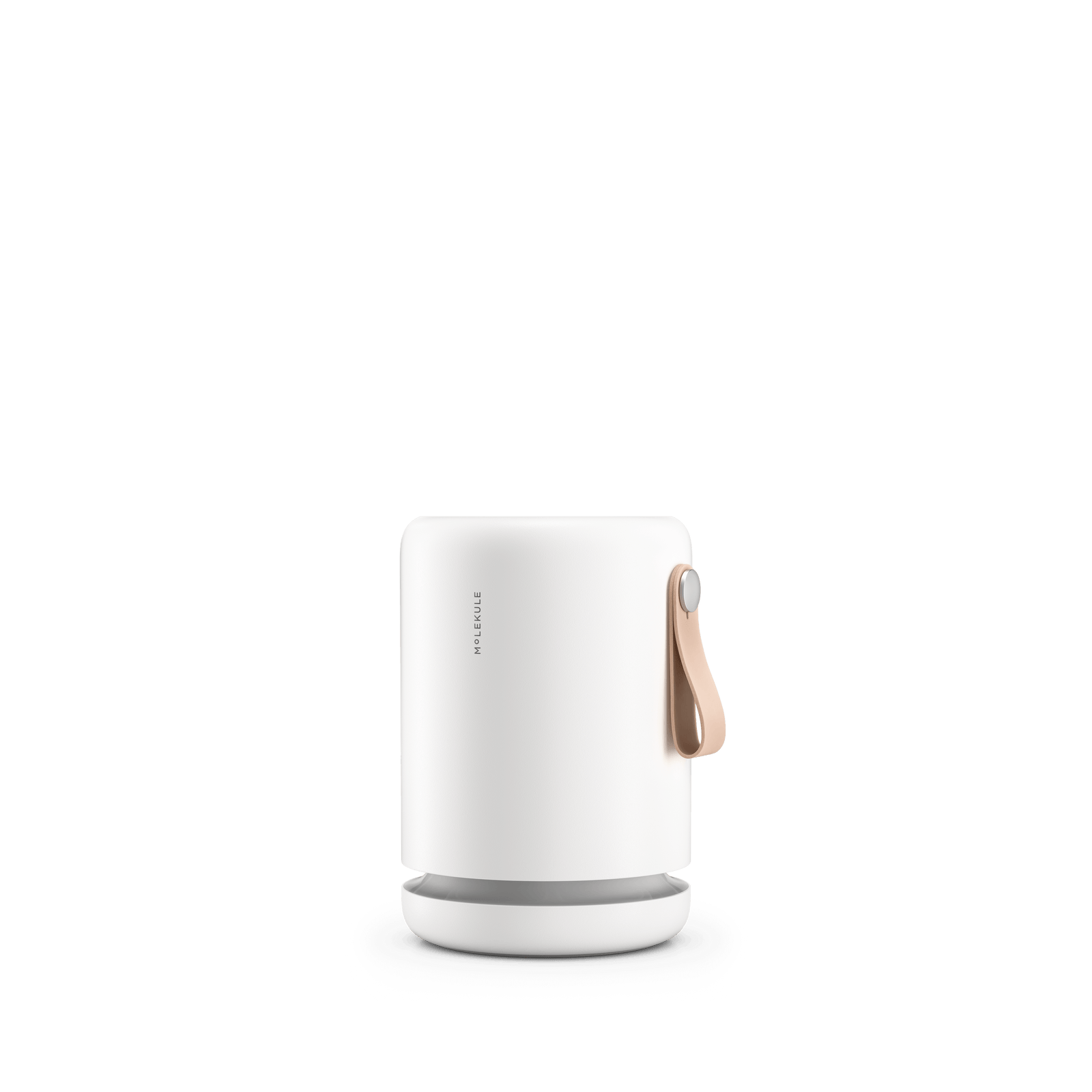Are you searching for an air purifier for the office, whether for your home office or for the cubicle at work? If so, there are some important things to know about both air purification technology and how your indoor air can impact your health.
Choosing an air purifier is vital for small spaces, because pollution builds up quickly. Home office air tends to be a lot worse than office building air. As a result people who work from home could also suffer from the effects of Sick Building Syndrome like fatigue and trouble thinking. In office buildings there are facilities managers who usually are responsible for making sure that air quality is tip-top. Very few of us would hire a facilities manager for our homes, so we have to manage air quality ourselves.
Most purifiers can reduce pollution when properly maintained, but depending on your situation certain solutions might be better than others. In general, it’s best to have an air purifier that has a solution for both particles and gasses and doesn’t add anything to the air. Also, many modern models come equipped with air quality sensors that can tell you about the invisible components of your air.
Why You Should Consider an Air Purifier for the Office
According to a 2001 national survey by Klepeis et al., the average American spends over 87% of their time indoors, with a big portion of it being either at home, the office, or public buildings such as a school.

(Above) Percentage time average American spent indoor vs. outdoor via NHAPS.
This is important to note because activities like cooking can increase pollution by more than 20 times the safe exposure level, and pollution can persist indoors for hours. In addition to particles from cooking, pathogens, chemicals, allergens, and other contaminants can build up in a poorly ventilated indoor environment.
The best way to control indoor air quality is to actually eliminate the source of pollutants and ventilate the room with cleaner outdoor air. But often we can’t simply open the window for our office cubicle; or perhaps your home does not circulate air well due to its floor plan; or maybe you’ve used electricity to heat or cool your small space to your preference and don’t want to spoil the temperature with outside air. In these situations, most people will begin researching air cleaning devices such as an air purifier to address their indoor air quality problems.
Types of Air Pollutants in Your Home or Office
Below, you’ll find pollutants grouped by removal method and the most common technologies best used to remove them from the air.





There are many other air purification technologies, and quite a few that are the same as mentioned above but with a different name. Some purifiers may use metal oxides or other substances to remove gasses like carbon filters do. Others may use plasma to kill microorganisms. The best way to be sure is to look for performance data on the manufacturer’s site. Look for purifiers that clean testing rooms in minutes, not hours.
At a minimum an air purifier should have a particle filter and a carbon filter. Any less and it’s probably not worth the cost. On the other hand some purifiers may seem to have more filters than are possible combined on top of each other. Most of these combination air cleaning units will come with a higher price tag, use more energy, and are less portable with added weight and bulk. This is something to keep in mind as it becomes more of a challenge to move the unit between rooms in your home.
Measure your air
To understand how to tackle your indoor office air, it can be very helpful to get an air quality monitor. These devices can’t detect everything, but there are three measurements you might want to take that can let you know about most of the pollutants above.
- TVOC (TotalVolatileOrganicCompounds) detector. Gas molecules can stick together and become the most unhealthy particles, so keeping your TVOC low helps to reduce the negative impact of indoor air pollution. Many people are surprised by the sources of VOCs and how they are impacting their air with daily activities.
- Particle sensor. These are relatively inexpensive and can let you know about pollution from roads, cooking, wildfire, and lots of other sources.
- Carbon dioxide (CO2) meter. This is the most useful measurement because not only do moderately elevated levels of CO2 slow your thinking, but it also can serve as a stand-in for other pollutants. If CO2 is accumulating, so is anything else with an indoor source.
Do Portable & Compact Air Purifiers Work for the Office?
With the various types of air purifying technologies available, there are also a variety of sizes and form factors that are made for specific room sizes (e.g. a small room or an office). Typically, you’ll find these type of air purifiers on the market:
- Compact: desk/table units
- Portable: able to move from room to room
- Console: large, bulky, cabinet-size units that aren’t mobile
There is a whole category of air purifiers that are made to be compact and portable – so you can use it on your desk or easily travel with it. Some compact air purifier units are even similar to air fresheners that can be plugged into an outlet of a room. Be mindful that smaller air purifiers like office desk air purifiers will clean considerably less air so are typically only suitable for close quarters and should be aimed at your face to maximize the amount of cleaned air you breathe.
Factors to Consider in Compact Air Purifier
Look for units that have filters with a good performance with PM2.5 such as HEPA. Also look for units that have filters that are easy to change regularly – an important requirement for the purifier’s efficiency. Then be sure there is plenty of carbon to absorb gasses.
Avoid Ozone Generators and Ionizers
Some units are as cheap as $20 and easily plug into an outlet to ionize the surrounding air. The problem with this type of cleaning is that these pollutants end up resting on other surfaces, like your tabletop, file cabinets, and chairs where they can easily be stirred up into the air again. Many of these units also produce ozone, a harmful byproduct that is a known lung irritant.
While a lot of these units list their silent fan-less features as ideal for the office, the negative is that they have the potential to produce irritants in a small, enclosed space. Learn more about air ionizer technology here.
Caveats and Negatives of Portable Air Purifier Units
Note that even highly rated HEPA filter air purifiers will fail and create problems when they are not well maintained. For example, dirty filters can become a source for air contamination as pollutants like mold fragments and ultrafine particles build up in an unchanged filter, potentially releasing allergens or toxic particles back into the room as they are pushed through the overloaded filter.
In regards to ionizer air purifiers, in a study on the effectiveness of air filters and air cleaners for allergic respiratory diseases by J.L. Sublett, the study found that ionic air cleaners actually yielded more sub-micrometer particles during these tests. This is due to the interaction of VOCs and the ozone produced by the ionizers, which creates ultrafine particles.
Because an effective air purifier that is filter-based requires you to draw a sufficient amount of indoor air of a room into the cleaning and filtering material – you will need to match the appropriate air purifier to their rated room size. Unfortunately, some manufacturers are entirely vague on their purifier’s rated capacity, so you should take extra care before making your purchase.
In general, small air purifiers that are around one or two feet in size, like Molekule Air Mini+ below, are best for bedrooms and other single rooms around 250 square feet.

You may need a larger purifier (about three feet in size) if your office is larger or part of an open floor plan. Molekule Air Pro shown here is rated for 1,000 square feet, and most purifiers that can clean a similar volume of air will have a similar size.

Air Pro’s sleek design fits right in
Extremely small purifiers that are designed to fit on desktops or even around your neck, like the one shown here, can’t move much air with their micro-sized fans. These purifiers may or may not be effective, but placing it so the purified air blows into your face will offer the most benefit.

The Type of Air Purifier You Should Buy for Your Home and Office
Buying a portable air purifier involves steps of “matching your pollutant/issues” with potential solutions, then making a conscious decision to pick the room you want filtered clean – and most importantly being vigilant on actually replacing the filters of your purifier. Otherwise your air will only be clean for six months or however long the filter lasts.
Here’s a summary of everything discussed above, and factors you should consider when choosing a home or office air purifier:
Units with true HEPA filter
The market tends to affix the word “HEPA-like” and “HEPA-type” marketing jargon onto every single air purifier. Consumers should ensure they are choosing units with true HEPA filters.
Carbon or PECO
Carbon filtration removes gasses and PECO destroys them. These two aren’t the only ways to remove gasses, but be sure any purifier you get has an equivalent solution.
Consider ozone risks for ionizers and ozone generators
Many of these air purifiers produce ozone, a lung irritant and particle precursor, but others might have a way of removing any ozone that is produced. To be sure, look for the purifier on the California Air Resource Board’s list of ozone-free purifiers.
Only use compact units in small spaces
Portable air purifiers might seem convenient, but might not move enough air to be effective. Be sure to check the room size rating of any purifier. Small, easy-to-carry purifiers are usually rated for 250 square feet or less, which is the size of a small bedroom. Large spaces require more air flow for clean air to reach the whole room.












